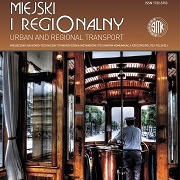Abstract 4/2018
Table of content
Maciej Kruszyna – Relationships between the functionality of the interchange node and planning of connections in the transport network
Jan Aleksandrowicz – Usefulness of automatic passenger counting systems for prediction of demand for transport services
Mariusz Dudek, Hendrik Weiss – Analysis of the quantities describing bicycle traffic based on the results of transport behavior research in German cities
Mariusz Kieć, Sylwia Pogodzińska – Assessment of speed for various types of bicycle infrastructure based on GPS data
Michał Drzał, Piotr Ostaszewski – Unconventional measuring techniques in traffic modeling
Abstracts
Maciej Kruszyna
Relationships between the functionality of the interchange node and planning of connections in the transport network
Abstract: The requirements to improve the functionality of the interchange node in above-ground urban public transport (integrating trams, buses or trolleybuses) are the starting point for the considerations. The improvement of functionality is to be mainly related to increasing the capacity of the node (enabling the servicing of a larger number of courses / vehicles) and limiting delays by reducing detentions and unjustified stops, while maintaining its compactness and convenience for travelers. This part of the article is based on the analysis of functioning nodes and publications regarding them (including author’s). Recommendations are formulated regarding the desired form of the node (as a target solution). The possible directions and ways of transforming existing objects are also indicated. One of the recommendations is to simplify the number of relations within the node, which affects the planning of the entire public transport network in the scale of the city or even the agglomeration. This applies to the layout of the line, the number of courses, the location and layout of nodes, etc. These aspects of the impact of changing the form of individual nodes on planning and modeling of transport throughout the network are the main part of the article. General comments and an example of specific transformations of the selected node in Wrocław are presented. The goal of the proposed activities (solutions) is to enable an increase in the number of connections in the network, reduction of delays and, as a consequence, acquisition of a larger number of passengers (changes in the modal split). The discussion on how the conditions described above can be taken into account in travel modeling is initiated in the final part of the article.
Key words: interchange node, transport planning, travel modeling
Jan Aleksandrowicz
Usefulness of automatic passenger counting systems for prediction of demand for transport services
Abstract. The article is a summary of research conducted at the end of 2017 aimed at verifying the correctness of collected data by an automatic passenger counting system used by the MPK S.A. in Krakow. It is also a first step towards larger studies to develop models for forecasting demand in urban public transport using data from an automated system. The article presents the results of comparative analysis of data from measurements collected using the classical observation method and data from vehicle I/O sensors collected automatically. In addition, there are formulas for functions presented allowing to convert automatically collected results into the real data. The analysis was summarized by linear regression charts and a table of matching measurement results from an automatic passenger counting system. At the end the diagram of the model of demand forecast for transport services using data from an automatic passenger counting system was presented. The usefulness of using this type of data for forecasting purposes has been assessed and the tools that will be used to create the model have been proposed. The article also presents the stages of activities that will be undertaken in order to create the models of demand forecast for transport services. The article was completed with a summary and a plan of further research aimed at increasing knowledge on the topic described in the paper.
Key words: prediction of demand, automatic passenger counting system, forecasting
Mariusz Dudek, Hendrik Weiss
Analysis of the quantities describing bicycle traffic based on the results of transport behavior research in German cities
Abstarct: Modeling traffic in many cities in the absence of comprehensive traffic research is very often based on general models. This article attempts to show the impact on the size of bicycle traffic and its parameters of urban factors (such as the size of the city expressed in both the number of inhabitants and the city surface, as well as population density) and economic (GDP level, income in the household). The impact of the motorization index for passenger cars on the travel parameters in bicycle traffic was also analyzed. In addition, the influence of the city’s elevation on the volume of bicycle traffic was examined, because it is widely recognized that the large fold of the city is a disincentive to using bicycles on trips. The above analyzes were carried out on the basis of the results of research on traffic behavior in German cities “Mobility in Cities” (2013).
Key words: urban transport, bicycle transport, modeling of the bicycle traffic
Mariusz Kieć, Sylwia Pogodzińska
Assessment of speed for various types of bicycle infrastructure based on GPS data
Abstract: The article presents the cyclists’ speed on selected elements of the bicycle infrastructure in Krakow, including: bicycle paths separated from the roadway, bicycle paths in curb, bicycle crossings. Cyclist’s speed has been estimated on the basis of empirical research and GPS data from the bike sharing system Wavelo and Strava application. The results indicate differences in cyclists’ speed for different standards of bicycle infrastructure and data sources. A high variability of cyclists’ speed for measurement sites was recorded. It is characterized by a value of standard deviation in the research samples. Speed obtained from the Strava application is approximately 5.5% higher than the speed recorded in empirical research. In the case of bike sharing system, the speed is around 74.5% of the speed observed in empirical research. Greater consistency of results was obtained when comparing the speed from two GPS data sources. The speed of Wavelo is approximately 71% of the Strava users speed. The presented results indicate the possibility of using GPS data to evaluate the speed of cyclists.
Key words: bicycle, speed, GPS, Strava, Wavelo
Michał Drzał, Piotr Ostaszewski
Unconventional measuring techniques in traffic modeling
Abstract: The aim of the article is to present the original project of introducing an algorithm based on neural networks in application to measurements performed in transport. The quality, quantity and method of obtaining data directly translate into the results of the simulation models created. Various systems (both commercial and proprietary) have been analyzed, which are used to obtain data for modeling. As a result of various doubts, system maladjustments or excessive costs, alternative solutions have been proposed that can eliminate the presented problems. As part of its work, solutions have been proposed that limit some of the problems reported by the authors in this regard. Test work justified the use of neural networks in measurements in transport. Test results with sufficient compliance with real observations were obtained and compared to the results of systems available on the market. The authors also analyze further required work and the possibilities of improving the solutions used.
Key words: measurement techniques, modeling, data acquisition, neural networks, machine learning, automatic measurement of traffic in transport

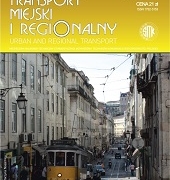
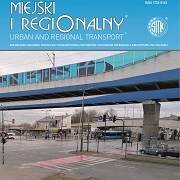 SITK
SITK 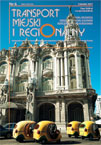 SITK RP
SITK RP 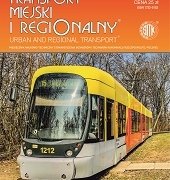
 SITK RP
SITK RP 